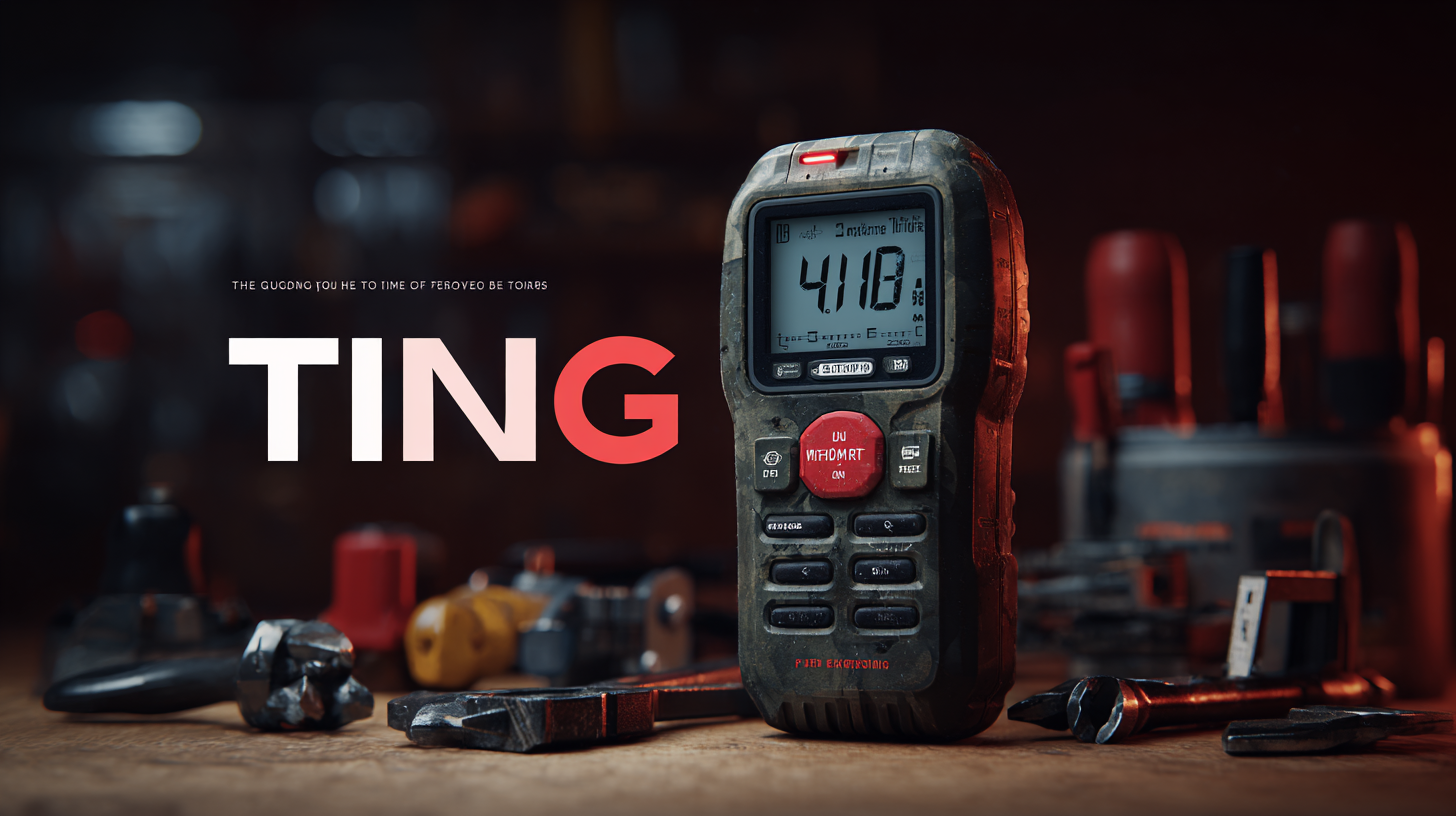The Ultimate Guide to Choosing the Best Cutting Tools for Precision Cuts
In the realm of manufacturing and machining, the importance of selecting the right cutting tools cannot be overstated. According to a recent report by Technavio, the global cutting tools market is expected to grow by over $8 billion between 2020 and 2024, highlighting the critical role that cutting tools play in enhancing productivity and precision in various industries. The trend towards automation and advanced manufacturing techniques has further amplified the demand for high-quality cutting tools, particularly for precision cuts. As more businesses prioritize efficiency and accuracy, understanding the nuances of Cutting Tool Cutting becomes essential for engineers and machinists alike. This guide aims to provide a comprehensive overview of the factors to consider when choosing cutting tools, ensuring your operations remain competitive in an ever-evolving industrial landscape.

Understanding Precision Cuts: Key Factors in Choosing Cutting Tools
When selecting cutting tools for precision cuts, understanding the key factors that influence performance is essential. Precision cuts often require tools that can deliver high accuracy, durability, and efficiency. According to the "2021 Global Cutting Tools Market Report," the demand for precision cutting tools is projected to grow by 6.2% annually, highlighting the importance of reliable tools in various industries, including aerospace and automotive manufacturing. Tools with high-speed steel and carbide tips are increasingly favored for their ability to withstand high temperatures and maintain sharpness, leading to enhanced cutting efficiency.
Another critical factor is the specific material to be cut. Different materials, such as stainless steel, aluminum, or composite materials, demand customized tooling solutions. Research from the "International Journal of Advanced Manufacturing Technology" indicates that using the appropriate cutting tool can improve cutting speed by up to 30% while reducing tool wear significantly. Furthermore, advancements in coatings, such as TiN or TiAlN, have been shown to provide superior surface hardness and corrosion resistance, making them ideal for precision applications. These considerations ensure that manufacturers can achieve the desired precision while optimizing production processes.
The Ultimate Guide to Choosing the Best Cutting Tools for Precision Cuts
Essential Industry Standards for High-Quality Cutting Tools
When selecting cutting tools for precision cuts, it is crucial to consider industry standards that ensure high quality and performance. The metal cutting tools market alone is projected to exceed $44.4 billion in 2023, driven primarily by growth in manufacturing sectors such as automotive, aerospace, construction, and machinery. The expected compound annual growth rate (CAGR) for this market from 2024 to 2032 is anticipated to surpass 5%, reflecting an increasing demand for advanced cutting solutions that meet stringent precision standards.
Moreover, recent advancements in cutting tool technologies have allowed domestic brands to surpass international counterparts, particularly in heavy-duty die-cutting tools. Companies specializing in cutting tools have reported uninterrupted growth, maintaining their position as global leaders in the industry. For instance, the production and sales of specialized heavy-duty cutting tools have remained dominant for over a decade, showcasing the potential for innovation and development in this field. In the context of effectively selecting cutting tools, aligning product quality with established industry standards is essential for manufacturers looking to enhance their operational efficiency and precision.
Types of Cutting Tools: Pros and Cons for Precision Applications
When selecting cutting tools for precision applications, it’s crucial to understand the pros and cons of the various types available. Whether you're considering a laser cutter, which offers exceptional accuracy and is increasingly utilized in fields like modern oil field equipment, or opting for magnetic drill machines known for their strength and precision, each tool has unique advantages. For instance, laser cutting technology has revolutionized the industry, boasting cutting speeds that can exceed 60 meters per minute. However, initial costs can be high, limiting accessibility for smaller operators.
One important tip is to always assess the specific requirements of your project against the capabilities of your cutting tool. For example, if you're working with different materials, a versatile tool like a high-quality circular saw may outperform other specialized tools due to its adaptability. Additionally, consider the maintenance and operational costs associated with each tool type. Regular maintenance can enhance tool longevity and performance, providing better precision in the long run.
Remember to evaluate surface roughness concerns when making your choice. Tools designed for finishing operations may be necessary if your application necessitates a smooth finish, as rough surfaces can impact overall quality and functional performance. Always ensure that your selected tool aligns not only with your immediate needs but also with your long-term operational goals.

How to Assess Tool Performance: Features that Matter
When selecting cutting tools for precise applications, it's crucial to assess their performance based on several key features that significantly impact their efficiency and accuracy. According to a report by the Tool Manufacturers Association, tool geometry is paramount—sharp edges, correct rake angles, and well-designed flank profiles can enhance cutting speed and prolong tool life. These factors contribute to reduced wear, improving the overall effectiveness of the tool.
Additionally, material composition cannot be overlooked. A study published in the Journal of Manufacturing Science and Engineering indicates that carbide and high-speed steel tools tend to yield better results in terms of durability and heat resistance. Tools made from these materials can withstand high cutting temperatures, minimizing thermal expansion and contributing to more consistent precision. Ultimately, a thorough assessment of all technical specifications—ranging from tool coating to vibration dampening—ensures that the chosen cutting tools meet the demands of high-precision tasks in any industrial setting.
Maintenance Tips for Longevity and Efficiency of Cutting Tools
When it comes to maintaining cutting tools for longevity and efficiency, proper care is essential. Regular cleaning after each use is crucial; this involves removing sawdust, residue, and other debris that can accumulate on blades and edges, affecting performance. Using a soft cloth or brush to wipe down tools helps prevent rust and corrosion, while also allowing you to inspect them for any signs of wear or damage. For tools that see frequent use, consider instituting a scheduled maintenance routine that includes sharpening blades and checking alignment.
Lubrication is another key aspect of cutting tool maintenance, as it reduces friction and heat build-up, which can degrade tool life. Different materials require different lubricants; therefore, it’s important to choose the right one for your specific tool and cutting application. Additionally, storing cutting tools in a dry and organized manner prevents unnecessary nicks and damage. Utilizing protective sheaths or holders can also shield tools from impact when not in use. By following these maintenance tips, you can ensure that your cutting tools remain sharp and efficient, ultimately enhancing the precision of your cuts.


